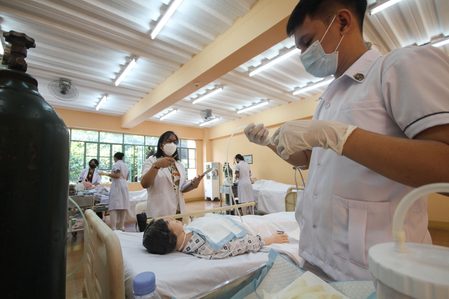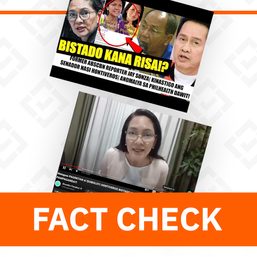SUMMARY
This is AI generated summarization, which may have errors. For context, always refer to the full article.

MANILA, Philippines – As COVID-19 infections in the country continue to drop, one of the most badly hit sector – education – is starting to recover by opening up schools for face-to-face classes.
Colleges and universities in Alert Level 1 areas are now allowed to hold in-person classes at full classroom capacity. But the government has set conditions to allow students to return to school, one of which is that they need to get medical insurance.
On March 11, Malacañang announced that students joining in-person classes must be registered with the Philippine Health Insurance Corporation (PhilHealth) or any medical insurance covering expenses for COVID-19.
While they believe that medical insurance is beneficial for students for their safe return to campuses, the National Union of Students of the Philippines (NUSP) urged the government to allot a budget for it. (READ: Gov’t urged to fund medical insurance of students in face-to-face classes)
NUSP chairperson Jandeil Roperos said that insurance being offered by the PhilHealth is not sufficient as the state health insurer only covers a certain amount based on the severity of cases. (READ: PhilHealth announces rate package for coronavirus hospitalization)
Under the Universal Health Care Law, all Filipinos are member of PhilHealth. They just need to register at any PhilHealth office.
How can students avail of a PhilHealth insurance?
PhilHealth said that students can either register as direct contributor or indirect contributor.
Direct contributors are members who have the capacity to pay the premium contribution, while indirect contributors are those who don’t. They are senior citizens, indigent citizens, as well as their qualified dependents whose premium contributions are subsidized by the government.
How much is the premium?
Premium rate for 2022 is P300 per month.
What if a student cannot pay the premium?
The government said that students aged 21 and above may enroll in PhilHealth as indigent members, on grounds that the student has no visible means of income. Those below 21 may be classified as dependents of their parents or legal guardians.
To qualify as an indigent member, PhillHealth said that students may secure a certificate of indigency from the city or municipal social welfare office of their local government unit where they are residing.
PhilHealth said that for schools that opted to register their students, they have made special arrangements to facilitate the registration. This is to ease the burden of queuing in PhilHealth offices. For instance, the University of the Philippines has set up its own PhilHealth registration process.
In case a higher education institution (HEI) allows students to participate in face-to-face classes without securing their medical insurance, the HEI “shall facilitate the necessary medical treatment/procedures” if they get COVID-19, the IATF (Inter-Agency Task Force) Resolution 164 said.
Currently, Metro Manila and some 47 other areas are under Alert Level 1 until March 31.
Under Alert Level 1 or what the government considers as the “new normal,” establishments and public transportation are allowed to be fully operational. There are also no restrictions on the movement of people from different age groups, though this is subject to specific rules that vary among local government units.
After reeling from the surge in infections driven by the highly contagious Omicron variant, COVID-19 cases in the Philippines continue to decline, with infections staying below 1,000. – Rappler.com
Add a comment
How does this make you feel?






There are no comments yet. Add your comment to start the conversation.